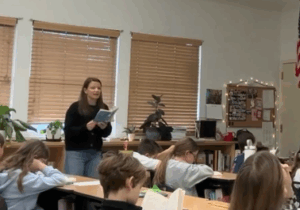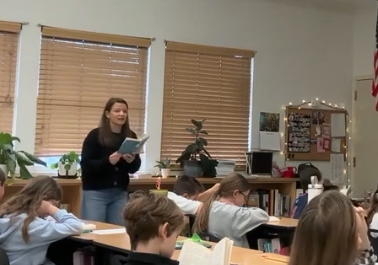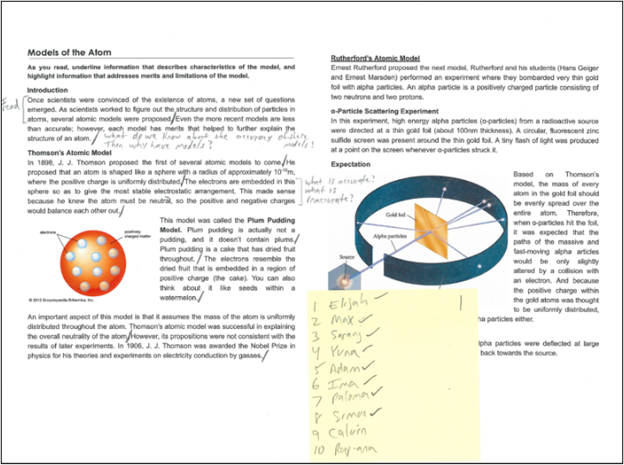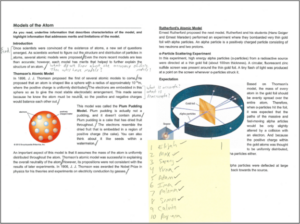
The joy of reading together…
I’m really excited to share our newest video clip–a great example of of one of the most important techniques in the TLAC library, FASE Reading. FASE Reading is a technique that supports student fluency and engagement in reading, topics we discuss extensively in the forthcoming TLAC Guide to the Science of Reading.
The clip comes to us from Jessica Sliman’s 4th grade classroom in Whitefish, MT. It shows 3 and a half minutes of Jessica and her students reading aloud from Lois Lowry’s Number the Stars.
I suspect you will love it as much as everyone on Team TLAC did.
First, here’s the clip:
Now some things we loved:
We love her initial framing, “I want you guys to notice moments of suspense.” This shapes student attention. Learning always starts with attention and directing students to attend to a ‘most important’ thing is one of the most important things a teacher can do. Jessica does a simple and elegant job of it here
Then they’re off reading. Jessica goes first. Her reading is beautifully expressive. She’s bringing the story to life modeling how to read meaningfully so that students will copy her. This will them to build the habit of infusing their reading with expression. Research suggests that this assists with meaning and is likely to translate into better and more expressive silent reading for students.
Izzy is the first student to read. she does a really nice job but Jessica pushes her to bring a bit more expression to her reading in a lighthearted and positive way: “How would she say that?” She’s making a norm of expressive reading that models her own. And happily this just increases her students’ enjoyment. Their laughter at Izzy’s portrayal underscores this.
Hadrian goes next. THere’s a great moment where Jessica drops in a quick definition of the word “prolong”–she’s recognized that students may not know the word and that it’s important. She provides the key knowledge without distracting from the story.
Hadrian is a pretty good reader but he’s also still developing his expressiveness. So it’s lovely the way she praises him for his “extra expression on “very very frightened.” Again the key is to cause students to practice reading aloud with expression and in so doing improve their fluency and infuse maximum meaning into their reading. She builds that culture intentionally.
Next Jessica reads again- moving the story along a bit, keeping it alive and fresh with her own expressive reading–she is after all, the best reader in the class–and modeling again for students how to express meaning as you read. Notice that she’s reading slightly more slowly than her natural rate might be. She’s reminding her class that fast reading isn’t good reading. Expressive reading is.
Steven reads next. Notice by the way that she calls on students unpredictably to read and that every student she’s called on is ready to read right away. This tells her something critical. Her leverage is high–meaning that she knows now that her students are not just listening but reading along.
Steven does something really interesting. He self-corrects, re-reading a sentence of his own volition not because he read it wrong but because he didn’t express its meaning as well as he could have. It’s a very meta-cognitive moment. “Oh, i didn’t capture that quite right.” Interestingly, Jessica doesn’t have to ask him whether he understands this passage. the way that he reads it SHOWS her this. So they can simply keep reading.
But what a statement about the culture of error Jessica has created! Students willingly and unselfconsciously improve their reading as they go.
Weston is next. We love the rhythm of the reading she’s established. Burst of reading are just long enough to allow students to take real pleasure in expressing the text but short enough to allow them to read with maximum success and attention. The switching feels lively but not disruptive. It balances the need to keep students on their toes–I might be next!--and locked in to the story. Beautiful.
Gracefully, Jessica steps in on the word cautiously and reads through to the end herself, again with beautiful expression.
It’s pretty clear that this reading–and that of her students–has had a real effect of her class since they plead to keep reading at the end. “We have to read the next chapter!” one student says urgently. They don’t want to stop!


